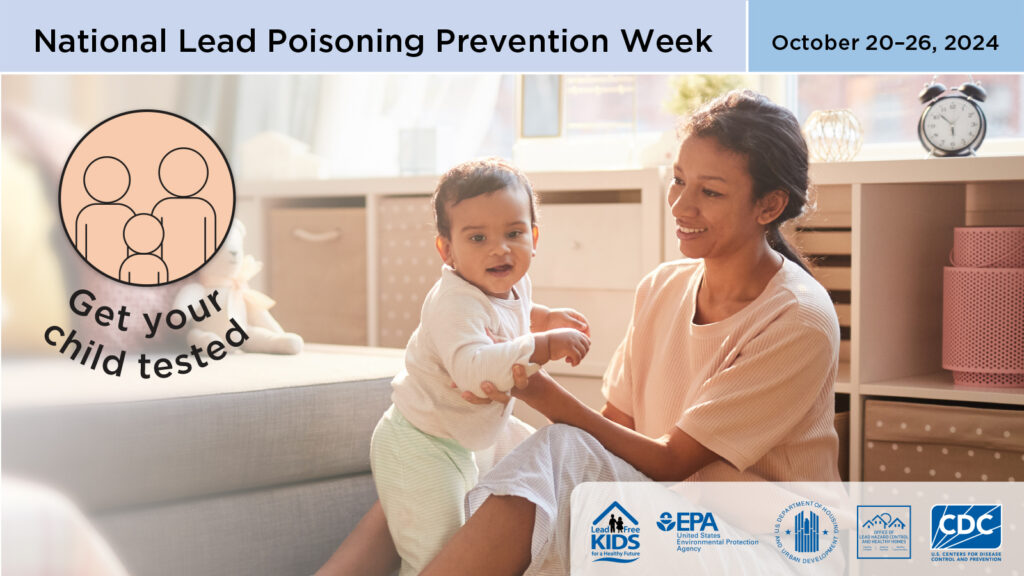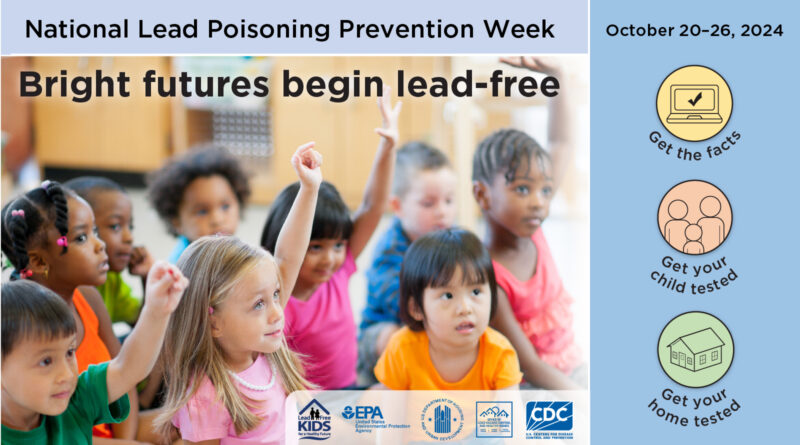It’s National Lead Poisoning Awareness Week
The U.S. Environmental Protection Agency (EPA) and the Centers for Disease Control and Prevention (CDC) recognize the third week of October as National Lead Poisoning Awareness Week to educate the public about the dangers and potential health impacts of lead.
What Is Lead?
Lead is a naturally occurring element found in small amounts in the earth’s crust. It may have some beneficial uses, but it can also be toxic to humans and animals, often causing health effects. There are no safe levels of lead.
Where Do We Find Lead in Our Daily Lives?
Lead-based paint was banned for residential use in New York City in 1960 and nationally in 1978. However, the past use of lead-based paint in homes built before then can present major health issues, especially for children under 6 years of age, and lead and lead compounds have also been used in a wide variety of other products found in and around our homes, including:
- Paint. In homes or buildings built before 1978, assume that the paint contains lead unless
tests show otherwise. When the paint peels and cracks, it makes lead paint chips and dust.
Children can be exposed to lead if they eat flaking paint chips or breathe in lead dust.
- Soil. Lead particles from exterior lead-based paint, leaded gasoline, aviation fuel, and lead
industries can settle in soil and last for years. Children can be exposed to lead in soil by
swallowing or breathing in lead-contaminated soil while playing. This soil can also get on
shoes and clothes and be brought into the home or other locations where children spend
time.
- Water. Some water pipes, faucets, and plumbing fixtures may contain lead that can get into
drinking water.
- Consumer products. Lead can be found in toys, jewelry, antiques, and collectible items.
Some glazes used on ceramics, china, and porcelain also contain lead, which might get into
food.
- Imported foods and medicines. Some candies, candy wrappers, spices, cosmetics,
traditional medicines, and ceremonial or religious powders purchased or brought from
outside the U.S. contain lead.
- Jobs and hobbies. Certain jobs and hobbies, such as stained-glass work, involve lead-
based products and might result in parents or caregivers bringing lead into the home.
Who Is at Risk for Lead Exposure?
- Children under the age of 6 years
- Pregnant women
- Adults who work in lead-related fields
What Are the Potential Health Effects?
- High blood pressure
- Digestive problems
- Miscarriages, premature births, low birth weight
- Neurological/cognitive/learning issues in children

How Do I Limit Lead Exposure?
- Learn about lead exposure and lead hazards.
- A blood test is the best way to find out if your child has lead poisoning. Be sure to talk to your child’s healthcare provider and request a blood test if you believe your child was exposed to lead.
- Minimize your risk of lead exposure by having your home tested for lead. NYCHA’s Lead Hazard Control Department is dedicated to testing all pre-1978 apartments and assessing paint conditions for hazards where there is confirmed or presumed lead-based paint. For this process to be effective, residents must ensure access for lead hazard control inspections and assessments.
- Any apartment with confirmed lead-based paint can have the paint abated (removed) through NYCHA’s TEMPO (Team for Enhanced Management Planning and Outreach) Abatement Program.
- Learn more about the lead status of your NYCHA apartment by visiting your property management office and obtaining your lead disclosure documents or by calling the Customer Contact Center (CCC) at 718-707-7771.

Please report peeling, cracked, or loose paint to NYCHA by calling the CCC at 718-707-7771 or using the MyNYCHA app (www.nyc.gov/mynycha).
If you have questions about this or any environmental health and safety matter, please email ehs@nycha.nyc.gov. Residents, employees, and any member of the public can submit environmental health and safety concerns at https://on.nyc.gov/submit-concern.
For more information, please visit:

